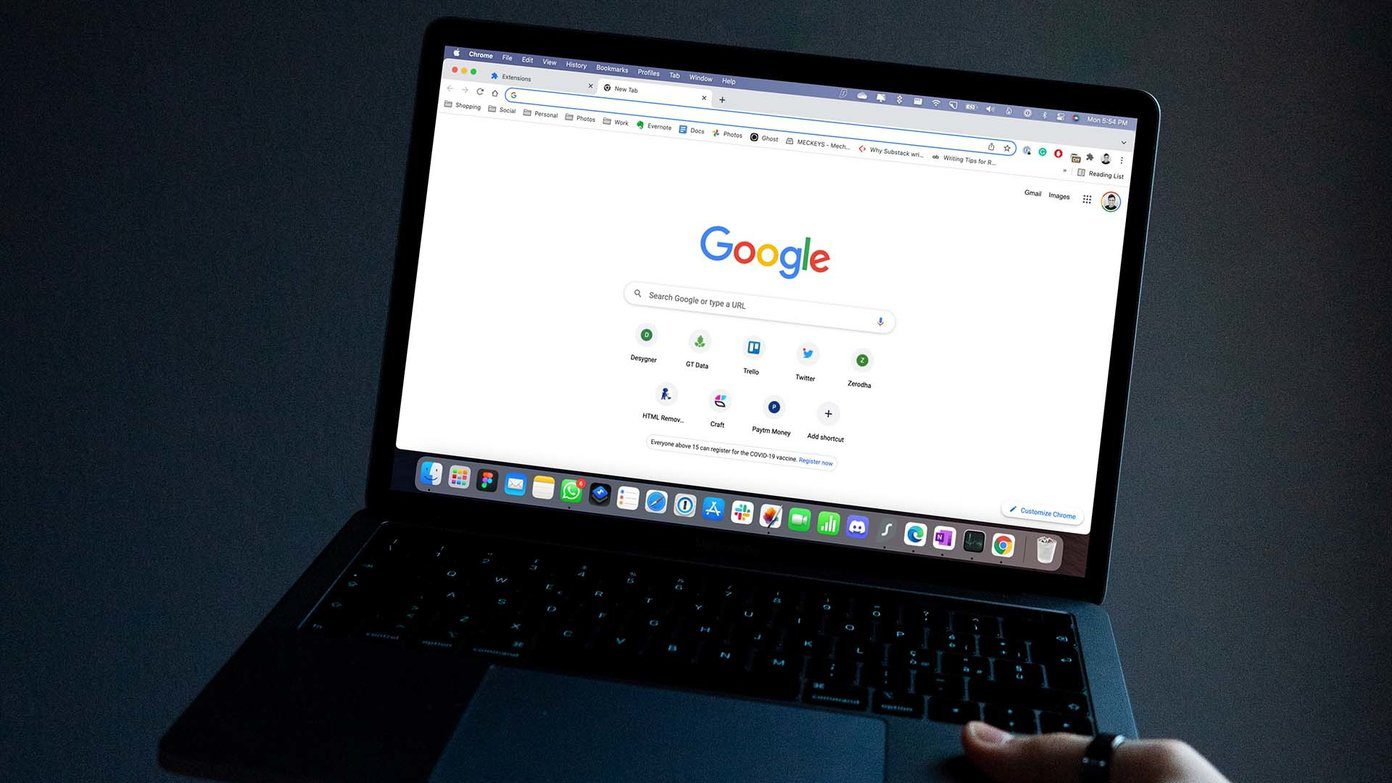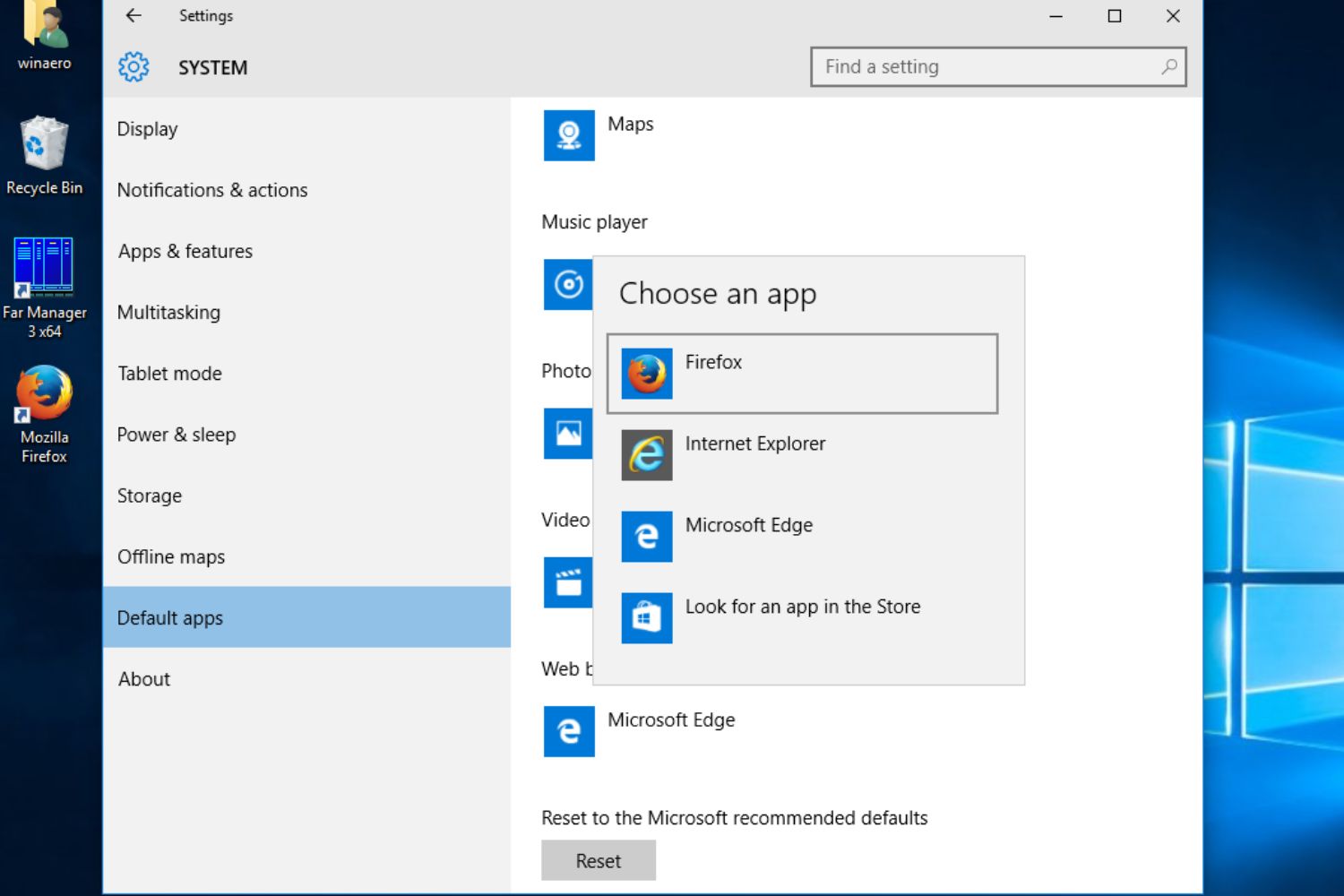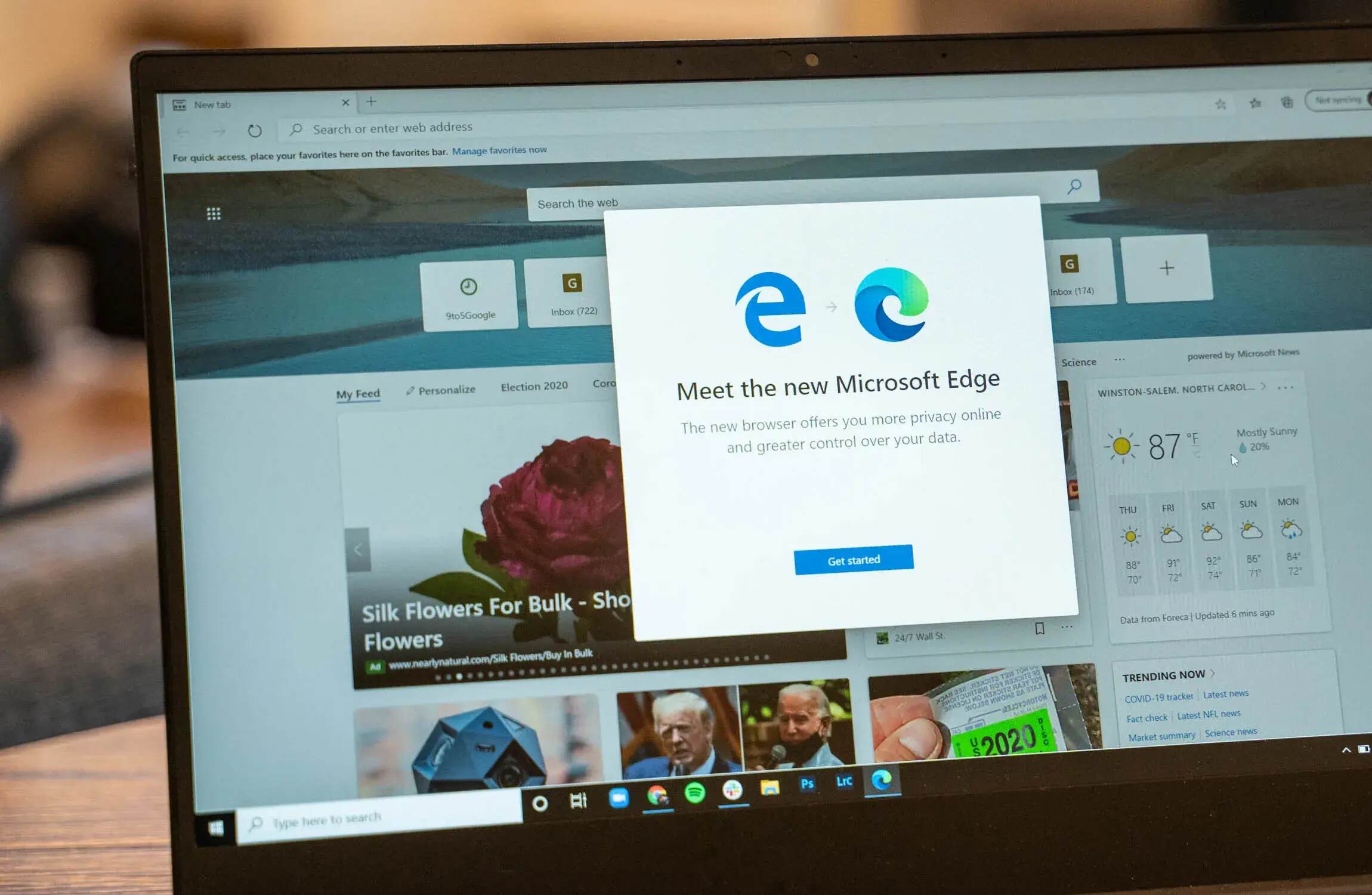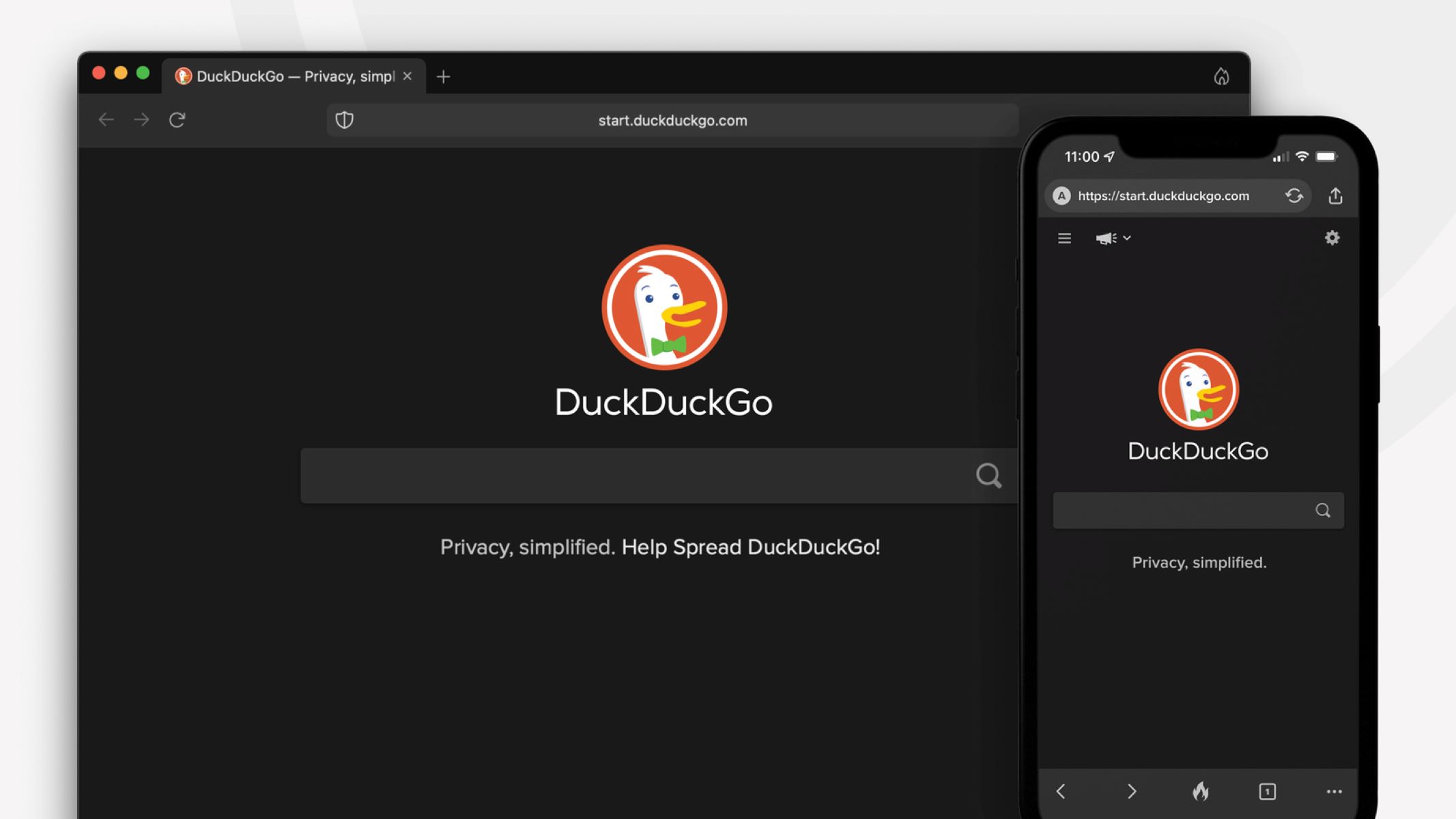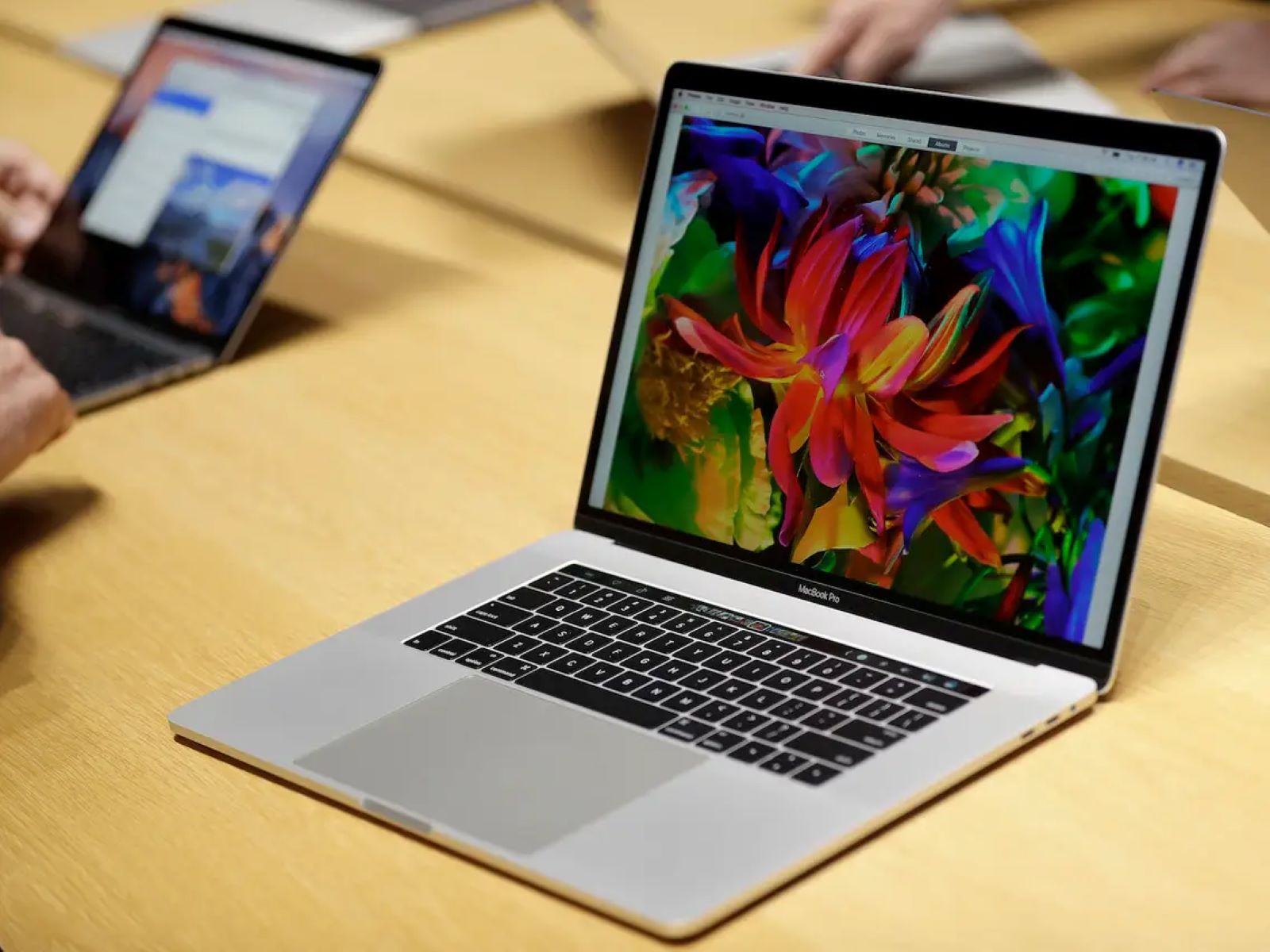Introduction
Welcome to the world of web browsing! In today’s digital age, having a reliable web browser is essential for accessing the internet and exploring all it has to offer. Whether you’re a seasoned internet user or a beginner, knowing how to open a browser is the first step towards connecting with the online world.
A web browser is a software application that allows you to access websites, search for information, watch videos, shop online, and much more. There are several popular web browsers available, each with its unique features and capabilities. In this article, we will guide you through the process of opening a browser and getting ready to surf the web.
In this digital era, there is a wide range of web browsers to choose from, including Google Chrome, Mozilla Firefox, Safari, Microsoft Edge, and Opera. Each browser has its own strengths and weaknesses, so finding the one that suits your needs is crucial. Consider factors such as speed, security, user interface, compatibility, and available extensions when selecting a browser.
Once you have chosen the browser you want to use, the next step is to install it on your device. Most web browsers are available for multiple operating systems, including Windows, macOS, Android, and iOS. Visit the official website of the browser you have chosen and locate the download link for your operating system. Follow the instructions provided on the website to install the browser on your device.
Now that you have successfully installed the web browser, it’s time to open it and start exploring the internet. Locate the browser icon on your desktop or in the applications folder of your device’s operating system. Double-click on the icon to launch the browser.
Upon opening the browser, you will be presented with a user interface consisting of various components such as the address bar, toolbar, and tabs. The exact layout and appearance may vary slightly depending on the browser you are using, but the basic functionality remains the same.
In the following sections, we will dive deeper into the process of configuring browser settings, navigating the web, managing tabs and windows, and customizing the browser to suit your preferences. These steps will further enhance your browsing experience and allow you to make the most out of your chosen web browser.
Now that you have a general understanding of what web browsing is and how to open a browser, let’s delve into the specific steps involved in getting started with your chosen web browser.
Step 1: Choosing a Web Browser
Before you can begin your online journey, you need to choose the web browser that best suits your needs. With a plethora of options available, it can be overwhelming to select the right one. However, considering a few factors can help you make an informed decision.
The first consideration is compatibility. Determine which operating system you are using, whether it’s Windows, macOS, Android, or iOS. Not all browsers are available for every operating system, so ensure the browser you choose is compatible with your device.
Next, think about features and functionality. Different browsers offer various features such as bookmark syncing, built-in ad blockers, privacy settings, and customization options. Consider which features are essential for you and which ones would enhance your browsing experience.
Speed and performance are crucial when it comes to web browsing. Look for browsers that are known for their speed and efficiency. Some browsers have a reputation for being faster than others, so take the time to research and read reviews about their performance.
Security is an important aspect of browsing the internet. Look for browsers that prioritize user security by providing features like phishing protection, automatic updates, and strong encryption. Ensure that the browser has a good track record of addressing security vulnerabilities promptly.
User interface and ease of use are also significant factors to consider. A browser with an intuitive interface and user-friendly navigation can enhance your overall browsing experience. Look for a browser that provides a seamless and clutter-free interface.
Extensions and add-ons can enhance the functionality of your browser. Many browsers support a wide range of extensions that allow you to customize and personalize your browsing experience. Check if the browser you’re considering has a robust library of extensions that align with your needs.
Lastly, consider the overall popularity and community support of the browser. Browsers with a large user base often have more extensive resources available, such as tutorials, forums, and user-contributed plugins. This can be particularly helpful if you encounter any issues or need assistance.
By carefully evaluating these factors, you can choose a web browser that meets your specific requirements and preferences. Remember, there is no one-size-fits-all solution, and what works for others may not work for you. Take the time to download and test different browsers to determine which one feels most comfortable and suits your browsing needs.
Now that you have selected a web browser, it’s time to move on to the next step: installing the browser on your device.
Step 2: Installing a Web Browser
After choosing the web browser that aligns with your needs and preferences, the next step is to install it on your device. Installing a web browser is a straightforward process and can be done in just a few simple steps.
Start by visiting the official website of the web browser you have selected. Most browsers have dedicated websites where you can download the latest version of the software. Open your preferred search engine and search for the official website of the browser.
Once you have landed on the official website, navigate to the download page. Look for a prominent button or link that says “Download” or “Get [Browser Name].” Click on this button to initiate the download process.
Depending on your device’s operating system, you may be prompted to choose the appropriate version of the browser. For example, if you’re using a Windows computer, you might see options like “Download for Windows” or “Windows Installer.” Select the version that corresponds to your operating system.
Once you have clicked the download button and chosen the correct version, the browser’s installation file will begin downloading. The file size may vary depending on the browser and version you are downloading.
Once the download is complete, locate the downloaded installation file on your device. This file will typically be found in your “Downloads” folder or in the default folder specified by your device’s settings.
Double-click on the installation file to start the installation process. You may be prompted by your device’s operating system to confirm that you want to run the installation file. Click “Yes” or “Run” to proceed.
Follow the on-screen instructions provided by the installation wizard. The steps may include accepting the browser’s terms and conditions, choosing an installation location, and selecting any additional options or features you want to be included.
Once you have completed the installation process, the web browser will be installed on your device. You can typically find the browser’s icon on your desktop or in the applications folder of your operating system.
Double-click on the browser’s icon to launch it for the first time. The browser will go through an initial setup and configuration process. This may include choosing a default search engine, importing bookmarks from another browser, and customizing other settings.
After the initial setup is complete, you are ready to start using your newly installed web browser. You can now open the browser anytime you want to access the internet and begin exploring the vast online world.
With your web browser successfully installed, it’s time to move on to the next step: opening the browser and getting started with your web surfing adventures.
Step 3: Opening a Web Browser
Now that you have installed your preferred web browser onto your device, it’s time to open it and embark on your online journey. Opening a web browser is a simple task that can be done in just a few clicks.
Start by locating the icon of the installed web browser on your desktop. Look for the distinctive logo or symbol associated with the browser you chose during the installation process. If you can’t find the desktop icon, you can also search for the browser in the applications folder of your operating system.
Once you have located the browser’s icon, double-click on it to launch the web browser. Depending on your device and browser settings, you may need to wait a few moments for the browser to fully load and initialize.
After the browser has opened, you will be greeted by the browser’s main interface. This typically consists of the address bar at the top, toolbar containing navigation buttons and additional functionality, and a blank browsing window in the center.
The appearance and layout of the browser’s interface may vary depending on the browser you have installed. For example, some browsers have a simplified and minimalist design, while others may have a more feature-rich interface.
At the top of the browser’s interface, you will find the address bar. This is where you enter the web addresses, also known as URLs, of the websites you want to visit. You can also use the address bar to perform web searches by typing in keywords or phrases.
Additionally, you may notice other elements in the browser’s interface such as bookmarks or favorites bar, extensions or add-ons, and settings or menu options. These elements provide additional functionality and customization options to enhance your browsing experience.
With your web browser successfully opened, you are now ready to start exploring the vast realm of the internet. To visit a website, simply type the website’s address into the address bar and press the Enter key on your keyboard. The browser will then load the website and display its contents in the browsing window.
You can also perform web searches by typing keywords or phrases directly into the address bar. The browser will use your default search engine to generate search results based on your query. Simply click on a search result to visit a relevant website or find the information you are looking for.
Now that you have successfully opened your web browser, it’s time to move on to the next step: configuring the browser settings to optimize your browsing experience.
Step 4: Configuring Browser Settings
Configuring your web browser’s settings is an essential step in optimizing your browsing experience. By customizing the settings, you can tailor the browser to your preferences and enhance its functionality. In this step, we will explore some of the key settings you can adjust to make the browser work just the way you want it to.
Start by accessing the browser’s settings menu. Look for the menu button, typically represented by three horizontal lines or dots, located in the top-right or top-left corner of the browser’s window. Click on this button to reveal a drop-down menu, then select the “Settings” or “Preferences” option.
Once you have accessed the settings menu, you will find a variety of options and categories to explore. Let’s take a look at some of the important settings you can configure:
Appearance: Customize the overall look and feel of the browser by choosing themes or changing the font size. You may also have the option to show or hide certain elements of the browser interface, such as the bookmarks bar or toolbar.
Search Engine: Set your preferred search engine. Some browsers offer a selection of popular search engines, while others allow you to add custom search engines of your choice.
Privacy and Security: Control how the browser handles cookies, browsing history, and other privacy-related aspects. You can also manage permissions for websites, such as access to your location or the ability to display notifications.
Extensions and Add-ons: Explore the available extensions and add-ons that can enhance the browser’s functionality. Install and manage these extensions to add features like ad blockers, password managers, or language translators.
Startup and Homepage: Choose whether you want the browser to open with a specific homepage or continue where you left off. You may also have the option to set multiple homepage tabs or specify a custom URL.
Downloads: Set the default download location for files you download from the internet. You may also have the ability to control how downloads are handled, such as asking for a confirmation before starting a download.
Advanced Settings: Access advanced settings that allow for even more customization and fine-tuning of the browser’s behavior. Here, you may find options related to network settings, proxy configurations, and cached data.
Remember to explore each setting category thoroughly and make adjustments based on your personal preferences. It’s also a good idea to periodically review and update your browser settings as your needs may change over time.
Once you have configured the browser settings to your liking, you are now ready to fully enjoy a personalized browsing experience tailored to your specific needs. The next step is to learn how to navigate the web efficiently and effectively.
Step 5: Navigating the Web
Now that you have your web browser set up and configured to your liking, it’s time to dive into the exciting adventure of navigating the vast expanse of the internet. Navigating the web is easy and intuitive, and in this step, we will guide you through the basic techniques and features to help you browse seamlessly.
The first and simplest way to navigate the web is by entering the URL or web address of the desired website directly into the address bar. Make sure you include the full address, including the “http://” or “https://” prefix if required. Once you have entered the address, hit the Enter key on your keyboard, and the browser will quickly load the website.
Another popular method of navigation is using search engines. If you are looking for a specific topic or website, you can simply type relevant keywords into the browser’s address bar. The browser will typically use your default search engine to generate a list of search results. Click on a search result that matches your intended destination to visit the corresponding website.
One of the primary navigation tools within a web browser is the back and forward buttons. These buttons allow you to move backward or forward within your browsing history. If you want to revisit a previously viewed webpage, simply click the back button. To return to a more recent page after using the back button, click the forward button.
Tabbed browsing is another valuable feature for efficient web navigation. Most modern browsers allow you to open multiple tabs within a single browser window. Each tab corresponds to a different webpage, allowing you to switch between them without losing your place on any particular site. To open a new tab, look for a plus sign (+) or a tab icon on the browser’s interface and click on it. You can also use keyboard shortcuts like Ctrl + T (Windows) or Command + T (Mac) to open a new tab quickly.
Managing tabs is crucial to keep your browsing organized. You can close a tab by clicking the small “X” on the tab itself or by using the keyboard shortcut Ctrl + W (Windows) or Command + W (Mac). To reopen a closed tab, you can use Ctrl + Shift + T (Windows) or Command + Shift + T (Mac). You can also rearrange tabs by dragging and dropping them within the browser window.
To navigate within a webpage, you can scroll up or down using the mouse wheel or by dragging the scroll bar on the right side of the browser window. Some websites may have internal navigation elements like menus, links, or buttons that allow you to move to different sections or pages within the site itself.
Finally, bookmarking is a handy feature for easy access to frequently visited websites. To bookmark a website, click on the star icon in the browser’s interface or use the keyboard shortcut Ctrl + D (Windows) or Command + D (Mac). You can organize your bookmarks into folders and access them from the bookmarks menu or bar, depending on your browser.
By utilizing these navigation techniques, you can effortlessly explore the vast realm of the internet and find the information, entertainment, and services that you seek. Remember to stay safe and cautious while browsing, and make sure to bookmark the websites you find most valuable to save time in the future.
In the next step, we will explore how to manage tabs and windows effectively, allowing for smoother multitasking and improved productivity during your browsing sessions.
Step 6: Managing Tabs and Windows
Efficiently managing tabs and windows within your web browser can greatly enhance your productivity and multitasking capabilities. In this step, we will explore various techniques and features that can help you stay organized and navigate seamlessly through multiple webpages.
One essential feature for managing tabs is the ability to open new tabs quickly. Most browsers allow you to open a new tab by clicking the plus sign (+) located next to the existing tabs or by using the keyboard shortcuts Ctrl + T (Windows) or Command + T (Mac). This allows you to have multiple webpages open simultaneously within a single browser window.
To switch between open tabs, you can simply click on the tab you want to view. The active tab will be highlighted, and its content will be displayed in the main browsing area. This allows you to easily switch between different websites without losing your place on any particular page.
If you open a significant number of tabs and find it difficult to manage them, you can organize them into groups or windows. Some browsers offer the option to create separate windows, each containing a specific set of tabs. This can help you categorize your work or personal browsing and keep things more organized.
To open a new window with a specific tab, you can use the keyboard shortcuts Ctrl + N (Windows) or Command + N (Mac), or right-click on a tab and select the option to “Open in New Window.” This allows you to have different browsing sessions running side by side or on different monitors.
If you no longer need a specific tab or window, you can close it by clicking the small “X” on the tab itself or using the keyboard shortcut Ctrl + W (Windows) or Command + W (Mac). To reopen a closed tab, you can use the keyboard shortcut Ctrl + Shift + T (Windows) or Command + Shift + T (Mac). This allows you to quickly restore tabs that were closed by mistake or that you want to revisit.
Another useful feature for managing tabs is the ability to bookmark them. By bookmarking a tab, you can save its URL for future reference or easy access. To bookmark a tab, click on the star icon in the browser’s interface or use the keyboard shortcut Ctrl + D (Windows) or Command + D (Mac). You can organize your bookmarks into folders and access them from the bookmarks menu or bar, depending on your browser.
If you find yourself overwhelmed by too many open tabs, you can use features like tab stacking or tab grouping, which are available in some browsers as extensions or built-in functionalities. These features allow you to organize tabs into groups or stacks, making it easier to manage and switch between related tabs.
Finally, if you have multiple windows or tabs open and need to quickly find a specific webpage, you can use the browser’s search functionality. Look for a search bar or a search box within the browser’s interface. Enter some keywords related to the website or page you are looking for, and the browser will display a list of matching results based on your search.
By mastering the art of managing tabs and windows, you can stay organized, improve your workflow, and seamlessly navigate through multiple webpages simultaneously. This allows you to efficiently multitask and make the most out of your browsing experience.
Now that you have a solid grasp on managing tabs and windows, let’s move on to the final step: customizing your web browser to suit your preferences and needs.
Step 7: Customizing the Browser
Customizing your web browser is the final step in creating a personalized and enjoyable browsing experience. Through customization, you can tailor the browser’s appearance, features, and functionality to match your preferences and needs. In this step, we will explore some common customization options that are available in most web browsers.
One of the simplest ways to customize your browser is by changing the theme or appearance. Many browsers offer a selection of themes to choose from, allowing you to change the overall color scheme and design of the browser interface. Look for the customization options in the browser’s settings menu or preferences.
Another popular customization feature is the ability to add extensions or plugins. These additional tools can enhance the browser’s functionality by providing features like ad blockers, password managers, weather widgets, and more. You can easily browse and install extensions from the browser’s official extension store or marketplace.
For those who like to stay organized, customizing the bookmarks bar is a handy option. You can add frequently visited websites to the bookmarks bar for quick and easy access. To customize the bookmarks bar, simply right-click on the bar and select the option to add or remove bookmarks.
Browser shortcuts or keyboard shortcuts are another aspect that can be customized to improve your browsing efficiency. Most browsers offer the ability to modify or create custom keyboard shortcuts for various functions. Check the browser’s settings or preferences to explore the available options for customizing keyboard shortcuts.
To enhance your privacy and security, browsers often provide customization options related to privacy settings. This includes options to clear browsing history, cookies, and cached data. You may also have the ability to manage website permissions, adjust privacy levels, and enable features like Do Not Track.
Furthermore, you can customize how the browser handles downloads. By accessing the download settings, you can specify the default download location, set automatic download behavior, and define preferences for file types and download notifications. These settings can help streamline your downloading process.
Some browsers allow you to customize the start page or homepage. You can choose to have the browser open a specific webpage when launched or continue where you left off during the previous browsing session. This customization option allows you to have quick access to your preferred websites upon opening the browser.
Lastly, exploring the advanced settings of the browser can lead to additional customization options. These settings often include toggles for experimental features, network settings, and various performance optimizations. Take caution when modifying advanced settings, as they may impact the stability and functionality of the browser if not done correctly.
By taking advantage of the customization options available in your web browser, you can create a personalized and unique browsing experience tailored to your preferences and needs. Experiment with different settings and configurations to find the perfect balance that suits you best.
With your browser now fully customized, you are ready to embark on your browsing adventures with a browsing experience that is truly your own.
Conclusion
Congratulations! You have successfully learned how to open, install, configure, navigate, manage, and customize a web browser. By following the steps outlined in this guide, you are now equipped with the knowledge and skills to embark on a delightful browsing experience tailored to your preferences.
Choosing the right web browser is the first and crucial step towards a seamless browsing experience. Consider factors such as compatibility, features, speed, security, and user interface when selecting a browser that suits your needs.
Once you have chosen a browser, installing it on your device is a simple process. Visit the official website, download the installation file, and follow the on-screen instructions to complete the installation.
Opening a web browser is as easy as locating the browser icon on your desktop or in the applications folder and double-clicking on it. Familiarize yourself with the different components of the browser interface, such as the address bar, toolbar, and tabs.
Configuring your browser settings allows you to personalize the browsing experience to your liking. Adjust appearance, search engine, privacy and security settings, manage extensions, and customize startup and homepage options.
Efficiently navigate the web using the address bar, search engines, back and forward buttons, and tabbed browsing. Take advantage of features like tab management, bookmarking, and webpage searching to streamline your browsing experience.
Customize your browser further by changing themes, adding extensions, customizing keyboard shortcuts, managing bookmarks, adjusting privacy settings, and exploring advanced features.
By following these steps and customizing your browser, you have optimized your browsing experience and tailored it to your preferences. Enjoy exploring the vast world of the internet, accessing information, connecting with others, and engaging in a wide array of online activities.
Remember to stay safe while browsing the internet, be cautious of suspicious websites or downloads, and regularly update your browser and security settings to protect yourself from online threats.
Now that you have the knowledge and tools, go forth and make the most of your web browsing experience. Happy surfing!









